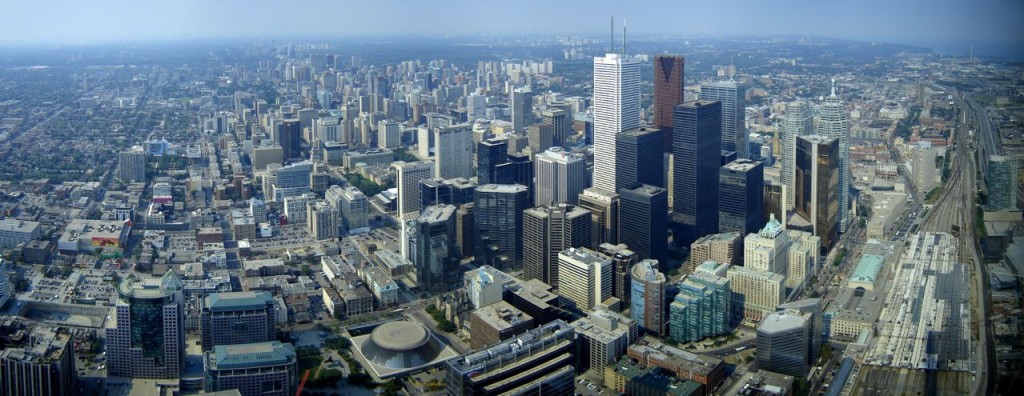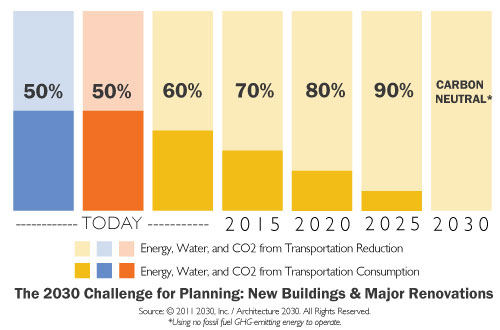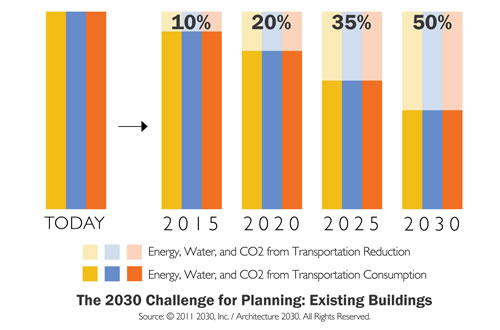
Jeff Ranson – Executive Director, Toronto 2030 District
Continent-wide, an ambitious urban building conservation initiative is seeks to address the environmental impacts of buildings. “2030 Districts” have been established in Seattle, Cleveland, Pittsburgh and Los Angeles, with over twenty other cities in the exploratory phase. Here in Toronto, a team lead by BOMA Toronto, the Ontario Association of Architects and Sustainable Buildings Canada expects to launch the Toronto 2030 District in December 2013. The Toronto 2030 District aims to leverage local programs, district-wide benchmarking and economies of scale to accelerate the pace of innovation in building performance.
First established in Seattle, 2030 Districts are in the leading edge of the national effort to create long-term partnerships, coalitions, and collaboration around achievable and measurable conservation goals. The provides a framework for mobilizing the renovation of hundreds of millions of square feet of existing urban and suburban buildings and infrastructure, the advancement of high performance building management practices, and adoption of new green building design. 2030 Districts are unique private/public partnerships that bring property owners and managers together with local governments, businesses, and community stakeholders to provide a business model for urban sustainability through collaboration, leveraged financing, and shared resources. Together they benchmark, develop and implement creative strategies, best practices and verification methods for measuring progress towards a common goal for the building sector.
The basis for this program is laid out by Architecture 2030 in the 2030 Challenge for Planning. The targets are ambitious, but recent changes to Energy Requirements in the Ontario Building Code, a highly skilled professional class, and huge increase in building management improvements in the commercial sector goes a long way to getting us there. By focusing on these targets within a specified “District” the program benefits from shared resources, and common issues, local design and approaches and services, as well as community cohesiveness to mobilize change.
2030 District Goals:
NEW BUILDINGS, MAJOR RENOVATIONS, AND NEW INFRASTRUCTURE:

EXISTING BUILDINGS AND INFRASTRUCTURE OPERATIONS:

The proposed Toronto 2030 District would make it the largest area to date, with boundaries from Bathurst st. to the Don Valley, and Dupont to Lake Ontario. The market here will make it unique in several other ways. First and foremost, the pace of construction in the downtown area is far greater than what other Districts are seeing as they recover from the slowdown in 2008. Secondly, the commercial sector is very active through programs like BOMA BESt, Race to Reduce and LEED EB: O&M. Whereas other cities have experienced reluctance from local chapters of BOMA, the leadership and momentum established here in Toronto makes them an important and willing partner.
Alongside BOMA, the OAA, who is developing a OAA+2030 Professional Education Series focused on capacity building in the design community and SBC, which has an extensive history of delivering building design and conservation programs alongside utilities such as Enbridge, comprise the founding members. The partners plan to expand on local successes, drive participation in conservation programs and engage building market segments that have been traditionally less active or well served.
One of the most critical activities will be to serve the local conservation market. Toronto has a number of utility programs, NGOs and government agencies working on common issues related to urban sustainability, but coordination between those groups is largely ad hoc. The 2030 District provides an opportunity to convene different groups and market sectors that share the downtown area to discuss opportunities for reaching district-wide targets. That may means making people aware of an existing program and directing more projects their way, or maybe its transferring knowledge from one market segment to another (i.e. BOMA’s commercial building success to condominium managers).
The backbone of the 2030 District is building performance data. The collection of this district-wide data will let building owners benchmark their performance at the local level instead of using National data limited to their own portfolio, or proxy US National data through the EPA’s Target Finder. In addition, this data will help to quantify sector specific impacts and opportunities like never before. Best of all, the work being done to set the baselines for building types and protocols for data collection in Canada will establish a framework through which other Canadian Cities can follow suit.
2030 represents sixteen years or roughly three generations of construction. It also represents a common deadline for greenhouse gas emissions reductions, set by groups around the world. Significant change is needed and possible in that timeframe and a 2030 District can provide the focus and support to get us there.
The 2030 District approach is so strong and unique because it brings people together under a common set of goals, namely, meeting the 2030 Challenge for Planning, issued by Architecture 2030 in 2007. These cities have committed to reducing energy and water consumption as well as GHG emissions from transportation in almost 80 million square feet of building space.- Ed Mazria, Founder, Architecture 2030